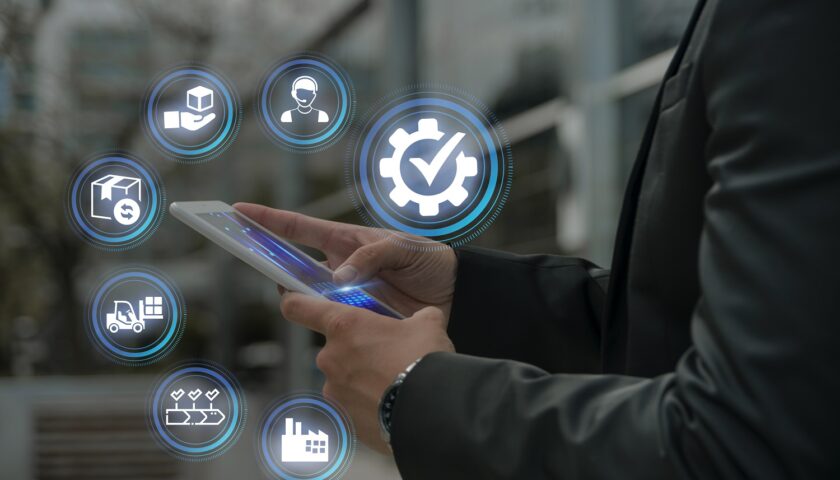Introduction
The future of robotics technology is a thrilling realm that promises to reshape how we live, work, and explore the world. Robotics is not just about machines but innovation, efficiency, and limitless possibilities. This article delves into the captivating world of robotics, exploring its history, current applications, and the exciting developments that lie ahead.
Understanding the Basics of Robotics Technology
Let’s grasp the fundamentals before we embark on our journey into the future. Robotics is the intersection of science, engineering, and technology that deals with robot design, construction, operation, and application. These robots are machines programmed to carry out tasks with precision.
Historical Development of Robotics
To appreciate the future, we must look to the past. Robotics has evolved significantly from its early mechanical origins in ancient times to the sophisticated, AI-powered robots we have today. Understanding this evolution provides context for what’s to come.
In ancient history, the concept of automation was first introduced through mechanisms like water clocks and mechanical dolls. However, it wasn’t until the 20th century that significant advancements were made. In 1954 George Devol and Joseph Engelberger developed the Unimate, considered the world’s first industrial robot. This marked the beginning of modern robotics.
As we progressed into the 21st century, the field of robotics saw remarkable growth. The introduction of microprocessors, the miniaturization of components, and advances in materials science contributed to the development of more compact and efficient robots. These innovations enabled robots to become more versatile and capable of handling a wider range of tasks.
Key Components of Modern Robotics
Modern robots consist of several key components, including sensors, actuators, controllers, and end-effectors. Each component plays a crucial role in ensuring robots can interact with and manipulate their environment.
- Sensors: Robots are equipped with a variety of sensors that allow them to perceive their surroundings. These sensors can include cameras, ultrasonic sensors, and infrared detectors. The data collected from these sensors enables robots to make informed decisions and navigate their environment.
- Actuators: Actuators are responsible for carrying out the robot’s movements. They include motors, hydraulics, and pneumatics, enabling robots to perform lifting, rotating, and gripping tasks.
- Controllers: The controller is the robot’s brain, where all the decision-making and processing occur. With advancements in artificial intelligence, controllers have become more sophisticated, allowing robots to adapt and learn from their experiences. Machine learning algorithms are increasingly used to enhance the decision-making capabilities of robots.
- End-Effectors: The end-effector is the tool or attachment at the end of the robot’s arm. It can be a gripper for picking up objects, a welding torch, or even a surgical tool. The choice of end-effector depends on the robot’s intended application. In the field of healthcare, end-effectors range from precise surgical instruments to rehabilitation aids.
Current Applications of Robotics
Robots have already transformed various industries, from healthcare to manufacturing. They assist in repetitive tasks, enhance precision, and can be found worldwide in surgical theatres and assembly lines.
Robotics in Healthcare
Robots are making waves in healthcare, assisting surgeons in delicate procedures, providing companionship to the elderly, and even disinfecting hospital rooms autonomously, reducing the spread of infections. In the field of surgery, robots like the da Vinci Surgical System enable surgeons to perform minimally invasive procedures with enhanced precision. This results in smaller incisions, faster recovery times, and reduced scarring for patients.
In addition to surgery, robots are increasingly used in patient care. Some robots serve as companions for the elderly, providing company and reminders for medication and appointments. They are especially valuable in addressing the challenges of an aging population. These social robots have interactive features that can engage with patients, monitor vital signs, and even offer medication reminders.
Robotics in Manufacturing
In manufacturing, robots streamline production, improve quality control, and enhance worker safety. Their efficiency and precision have revolutionized industries worldwide. Automotive manufacturing, for instance, heavily relies on robots for tasks like welding, painting, and assembly. This not only speeds up production but also ensures consistent quality.
Furthermore, collaborative robots, or cobots, are becoming increasingly popular. These robots work alongside human workers, enhancing efficiency and safety. They can take on physically demanding or repetitive tasks, allowing human workers to focus on more complex responsibilities. In some manufacturing plants, cobots and human workers work side by side, creating a flexible and adaptable production environment.
Robotics in Space Exploration
Robotics plays a crucial role in space exploration. Rovers like Curiosity have allowed us to explore the Martian surface, while robots assist in building and maintaining the International Space Station. These robots are designed to withstand extreme conditions and operate in environments where human presence is challenging.
The Mars rovers, for example, have been instrumental in our quest to understand the Red Planet. They collect data, capture images, and perform experiments, providing valuable insights into the planet’s geology and potential habitability. Additionally, robots like the Robonaut, developed by NASA, have been used to perform maintenance tasks on the International Space Station. These robots are equipped with advanced sensors and tools to handle complex tasks in the challenging environment of outer space.
The Future of Robotics Technology
The future of robotics is brimming with exciting prospects. Let’s explore some of the key areas where robotics technology is set to make a significant impact.
Advancements in Artificial Intelligence
Artificial intelligence is the driving force behind advanced robotics. AI-powered robots can learn and adapt, making them more versatile in various applications, from autonomous vehicles to personal assistants. Machine learning algorithms enable robots to improve their performance based on past experiences.
One area where AI is making significant strides is autonomous vehicles. Self-driving cars are becoming a reality, with companies like Tesla and Waymo developing advanced systems that can navigate roads, interpret traffic signals, and make split-second decisions to ensure passenger safety. These self-driving vehicles have the potential to revolutionize transportation, making it safer and more efficient.
In the field of personal robotics, AI-powered virtual assistants like Siri and Alexa are becoming increasingly sophisticated. These digital assistants can understand and respond to natural language, making human-computer interaction more intuitive. They can perform tasks such as setting reminders, answering questions, and controlling smart home devices, enhancing convenience in our daily lives.
Human-Robot Collaboration
As robotics technology advances, we will see increased collaboration between humans and robots. They will work alongside us, taking on tasks that are dangerous, monotonous, or simply beyond human capabilities. This collaboration has the potential to enhance productivity across various industries.
In the field of construction, for example, robotic exoskeletons are being developed to assist construction workers in lifting heavy loads, reducing the risk of physical strain and injuries. These wearable devices provide extra support and enhance the worker’s strength. Additionally, drones equipped with advanced robotics and cameras are used for tasks like surveying construction sites, ensuring that projects are on track and within budget.
The collaboration between humans and robots is becoming increasingly prominent in the healthcare sector. Surgical robots, for instance, work in tandem with surgeons, enhancing their precision and providing a greater range of motion. These robots are controlled by skilled surgeons, allowing for minimally invasive procedures with smaller incisions, less pain, and faster recovery times for patients.
Ethical Considerations in Robotics
With greater integration of robots into our daily lives, ethical concerns arise. How should robots be programmed to make moral decisions? How do we ensure their actions align with our values? These questions are becoming increasingly important.
In healthcare, for instance, robotic caregivers for the elderly raise questions about privacy, autonomy, and the emotional well-being of individuals. How do we strike the right balance between human care and robotic assistance? Ethical programming and guidelines are necessary to navigate these complexities.
In the field of autonomous vehicles, ethical considerations are crucial. These vehicles are equipped with AI systems that make split-second decisions in potential accident scenarios. Determining how these decisions align with societal values and ethics is a pressing concern. Ensuring that autonomous vehicles prioritize safety and ethical choices is paramount as they become more integrated into our roadways.
Challenges and Limitations
While the future of robotics is promising, it’s not without challenges. Technical limitations, safety concerns, and the potential for job displacement are all areas that must be addressed. Let’s explore these challenges in more detail.
Technical Limitations:
Robotic technology is still evolving, and there are technical challenges to overcome. For instance, robots must become more adaptable to complex, unstructured environments. They need to handle unexpected situations and make rapid decisions in real time. Research and development in these areas are ongoing, and experts are exploring solutions such as reinforcement learning, which allows robots to learn from trial and error.
Safety Concerns:
Ensuring their safety is crucial as robots become more integrated into our lives. In settings like autonomous vehicles, there’s a need for robust safety measures to prevent accidents. Additionally, safety protocols must be in place in collaborative work environments to protect human workers. Safety features such as collision avoidance and emergency shutdown systems are being developed and refined to minimize risks.
Job Displacement:
The integration of robotics in industries like manufacturing can lead to concerns about job displacement. While robots can perform tasks efficiently, this can result in workforce changes. However, it’s essential to note that robots also create job opportunities in fields like robot maintenance, programming, and design. As the demand for skilled robotics professionals grows, educational programs and training opportunities are becoming more accessible to prepare individuals for these roles.
Conclusion
In conclusion, the future of robotics technology is both fascinating and promising. With advancements in AI, increasing collaboration between humans and robots, and ongoing ethical discussions, we are on the brink of a new era. Embracing these changes and addressing challenges will be crucial in shaping a future where robotics technology benefits humanity.
As we look forward, it’s clear that robots will continue to play a vital role in various aspects of our lives. The possibilities are limitless, from healthcare and manufacturing to space exploration and personal assistance. The synergy between human intelligence and robotic precision opens doors to innovation and progress.
So, as we explore the future of robotics, let’s not forget the human element in this evolving landscape. While robots can perform tasks efficiently, human creativity, adaptability, and ethical judgment will guide the path forward. The future of robotics is not about replacing humans but about enhancing our capabilities and quality of life.
In this ever-evolving journey, we must continue to learn, adapt, and collaborate, ensuring that robotics technology serves as a tool for the betterment of society. As we move forward, let’s embrace the future with open minds, embracing the exciting possibilities that robotics technology has to offer. In doing so, we can create a future where humans and robots coexist harmoniously, advancing the frontiers of knowledge and technology.
FAQs on the Future of Robotics Technology
How will robotics technology impact the job market?
- Robotics technology may lead to job displacement in some sectors, but it also creates new job opportunities in robot design, maintenance, and programming.
Are there any potential safety concerns with advanced robots?
- Safety concerns exist, especially in fields like autonomous vehicles and healthcare. Ensuring robot safety through rigorous testing and regulations is essential.
Can robots truly replicate human decision-making and ethics?
- While AI can mimic human decision-making, replicating human ethics is a complex challenge. Ethical programming and ongoing discussions are necessary.
What are the ethical considerations surrounding robot use in the military?
- The use of autonomous robots in the military raises questions about responsibility and accountability. Discussions about ethical frameworks and regulations are ongoing.
How can individuals prepare for a future with advanced robotics technology?
- Staying informed about robotics developments, acquiring relevant skills, and adapting to a changing job market are essential for individuals preparing for the future.





